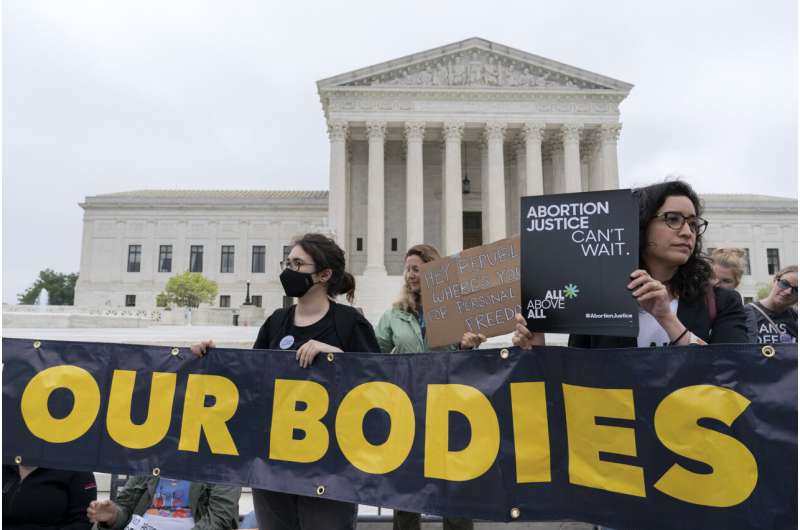US abortion trends have changed since landmark 1973 ruling

The abortion landscape has changed in the United States since the Supreme Court's Roe v. Wade decision in 1973. A leaked draft of a Supreme Court decision suggests a majority of justices support throwing out that ruling, which legalized abortion nationwide.
The most comprehensive abortion data is collected by the Guttmacher Institute, a research group that supports abortion rights. The Centers for Disease Control and Prevention also compiles data but not all states, including California, submit reports.
Here's what is known:
—About 630,000 abortions were reported to the CDC in 2019 although information from some states is missing.
—Abortion numbers have been falling since a peak of 1.6 million in 1990 and the trend coincides with declining pregnancy rates.
—The 2019 rate was 11.4 abortions per 1,000 women aged 15 to 44, compared with 16.3 per 1,000 in 1973.
—Nearly all abortions—almost 94%—were performed at or before 13 weeks of pregnancy.
—Women in their 20s make up the bulk of abortion patients, or about 57% in 2019, CDC data show.
—In 1973, there were more than 160 pregnancies per 1,000 women in their 20s, compared with about 110 per 1,000 by 2017, according to the Guttmacher Institute.
—More than half of U.S. abortions—54%—are done with pills rather than medical procedures. That rate has been increasing since 2000 when mifepristone, the main drug used, was approved by the Food and Drug Administration. The preliminary rate, from 2020, will be updated later this year but is expected to remain above 50%, according to Guttmacher.
—Almost three-quarters of all abortions in 2019 were in Blacks and white women. Black women had the highest rate—almost 24 abortions per 1,000 women; white women had the lowest, at almost 7 per 1,000 women. The CDC data on race is from 30 areas that reported race and ethnicity.
—Most women who have abortions—about 60%—have at least one child, according to CDC's 2019 data.
© 2022 The Associated Press. All rights reserved. This material may not be published, broadcast, rewritten or redistributed without permission.




















